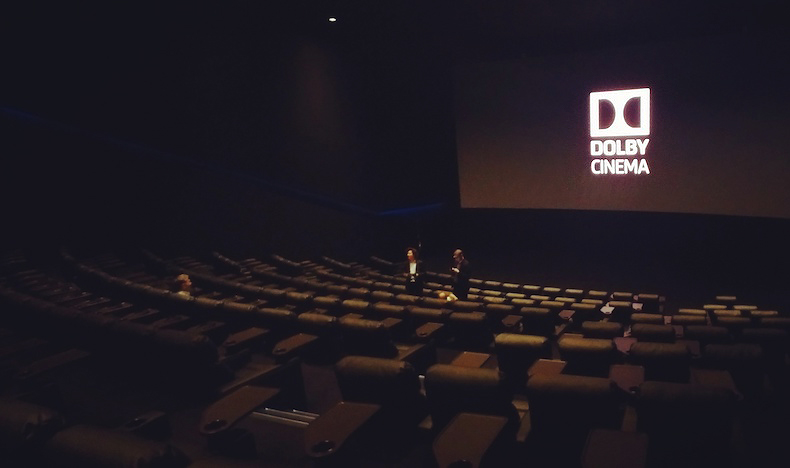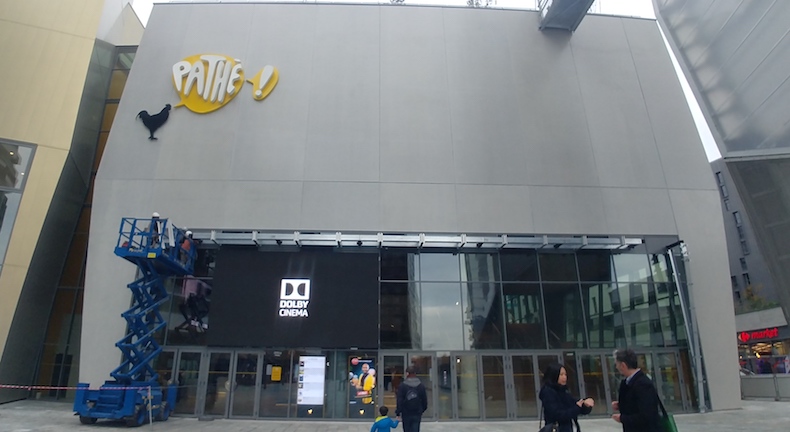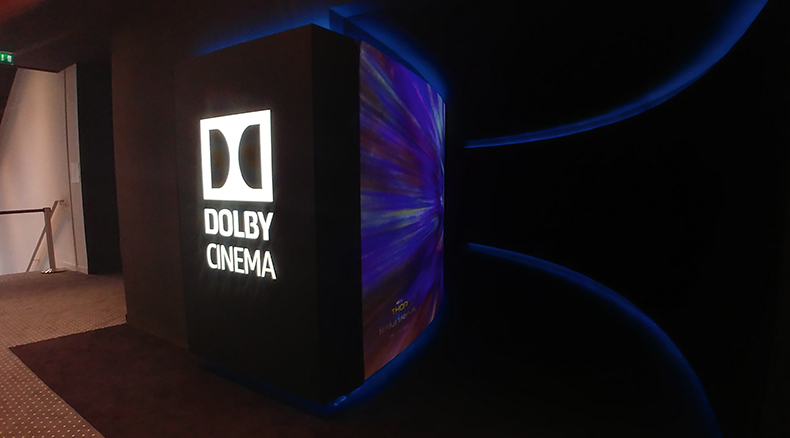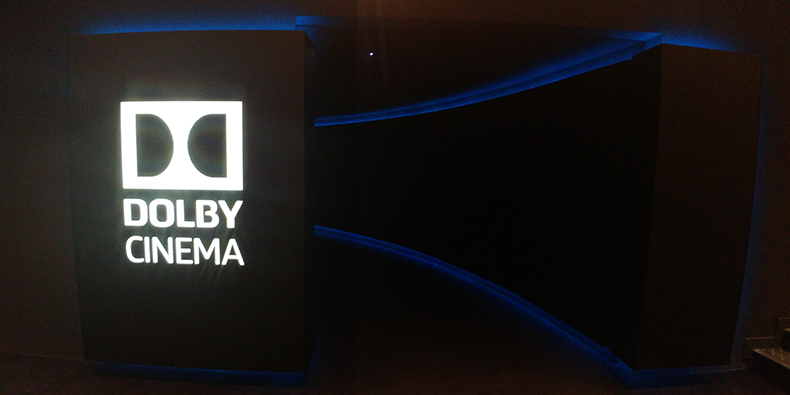6 things we learned at a brand-new Dolby Cinema
We visit Dolby’s latest cinema, Pathé Massy in Paris – the first Dolby Cinema in France, and the first in Europe with recliner seating.

Today, Dolby Vision HDR and Dolby Atmos technologies seem almost ubiquitous in the home cinema market compared with their fledgling presence a few years ago. At least one HDR and/or immersive audio technology features in more than a handful of TVs, projectors, speaker packages, soundbars and AV receivers.
But, lest we forget, the Dolby technologies were born in the cinema.
There are now more than 3000 Dolby Atmos-enabled cinemas. But there are only 114 actual Dolby Cinema auditoriums that, as well as boasting Atmos installations, also incorporate Dolby's Vision HDR-capable laser projection system for the complete audiovisual experience.
With all major studios now committed to Dolby’s, well, vision, 120 films have been released or commissioned with both Vision and Atmos since the big push began in December 2014.
We've been lucky enough to catch some of these releases in Vision and Atmos at the private cinema at Dolby’s London HQ, but only lately have we had the pleasure in a commercial cinema.
We visited Dolby’s latest cinema, Pathé Massy in the southern part of Paris – it's the first Dolby Cinema in France, and the first in Europe with recliner seating. Here's what we learned...
(Yes, we really did go all the way to France to watch a film.)
1) Your local cineplex could be next

Granted, that’s not likely if you live in the outskirts of a smaller town, but technically speaking the requirements for cinemas to be ‘Dolbified’ aren’t as esoteric as you may think.
The latest hi-fi, home cinema and tech news, reviews, buying advice and deals, direct to your inbox.
The minimum screen size necessary is about 14m, but seat-wise there’s no specific size an auditorium needs to be to qualify for renovation. They just have to be matte black (of which more later).
The Massy’s screen is 17.4 meters wide and the full seat count is 215, with all but four of those being recliners – a premium furnishing that roughly halves the number of seats possible in a cinema screen.
Such flexibility gives Dolby challenges when it comes to fitting its Cinema, though. For example, the Massy’s Dolby Cinema screen has a slight overhang at the back of the room, so Dolby had to make some changes and install six “in-fill” speakers. While room layouts may not be the same in each Dolby Cinema, Dolby prides itself on the fact that overall architecture and output will always be the same.
MORE: Dolby Cinema: Dolby and AMC plan to reinvent the cinema
2) The kit behind the picture show
While Dolby has preferred suppliers for equipment, exhibitors generally have the freedom to choose what they use – apart from when it comes to the projection system.
Dolby Cinemas exclusively use Christie dual 4K laser projector systems to deliver Dolby Vision, rather than a Xenon projector you’d see in a normal cinema screen. Supposedly capable of beaming 31 lamberts of light to the screen (compared to the customary 14 lamberts), and maintaining 14 lamberts during 3D projection (compared to the more normal 3 - 7), the projection systems boast a contrast ratio of 1,000,000:1. Dolby claims even conventional DCI-specc'd films looks better through a Dolby system.
On the audio front, up to 64 speakers can be used in an Atmos cinema. The Massy has 46 Christie Vive speakers, located to the side and overhead, and including the speakers covering the over-hang.
MORE: Dolby Laboratories - quietly making it sound better
3) It’s not just technology; it’s the “experience”

While Dolby’s aim is to provide the technology to allow cinemagoers to see and hear what the filmmaker intended, its Cinema concept is all about the whole experience.
Julian Stanford, Dolby Cinema Europe's director of business development, said "We don't want people to think about the technology. It's the Dolby Lab's scientists' intention to serve the storyteller's art. The point is that you're focused on story being told."
Indeed, that experience starts before you’ve taken your seat, quite literally outside the screen. At the Massy, a 5.5m-long Audiovisual pathway leading to the screen has been designed to “transition you from the outside world, the lobby of the cinema, into this auditorium”.
The theme of immersion is at the forefront of Dolby Cinema. The seating is in curved rows, the screen is curved, and seats are individually positioned away from the walls.
Everything is black – the seats, walls, carpets and ceiling. That’s not because Dolby shares its tastes with a 15-year-old Goth, but because black reduces reflective light. The walls and ceiling are covered with acoustically transparent material that hides all the speakers. Cove and atmospheric lighting work to maximise the efficiency of how the auditorium works in presenting film.
Stanford continues: “What Dolby does with light is central to the strength of Dolby cinema. Dolby is very well known for its sound engineering, but it’s the vision engineering that we’ve added to that, and the design architecture as a third leg, that all combine to provide experience.”
4) It’s not all about blockbusters

Dolby says it’s confident about the amount of titles we’ll see in the format next year, but emphasizes that Dolby Cinema is the best way to see any genre of movie – as good for weepy dramas as it is high-adrenalin action blockbusters. Indeed, Massy itself opened with French biographical drama La Promesse de l’aube.
We imagine dramas and the like may be a harder sell - especially as Dolby Cinema screenings often attract a small premium – but that’s not to say we wouldn’t be intrigued to find out.
5) Guess what? It looks incredible
On our visit, we're treated to a film you might naturally associate with Vision HDR and Atmos: Marvel’s Thor: Ragnarok.
While much of the film’s entertainment comes from the whimsical script, a great deal of our enjoyment is indeed owed to the presentation. The track’s Atmos treatment makes us feel totally encapsulated in our centrally situated seat – especially during the raucous Gladiator stadium battle. The almost seismic bass rumble as Surtur destroys Asgard seemingly comes from every direction, and you don’t need to be watching the screen to track the trajectory of the spaceship as Thor and co flee Sakaar.
Marvel’s typically colourful cinematic palette lends itself to HDR strengths, too. As we have recognised time and time again, next-level contrast notably enhances the viewing – especially, in this case, as lightning sparks from Thor and Surtur engulfs the screen in fire.
The cinema chain dictates upcharges for Dolby Cinema screenings, not Dolby, and at the Massy location that's €4. Worth skipping the popcorn/drink combo size upgrade for? In our opinion, absolutely – even if you leave the cinema pretty ravenous.
MORE: HDR10 vs Dolby Vision: which is better?
6) The future of Dolby Cinema

Most Dolby Cinemas are situated in America and China, but the European presence - while tiny in comparison - is growing. The Pathé Massy is the fifth Europe location - the next, imminent, openings are in Lyon in France, and Amsterdam and Rotterdam in The Netherlands.
As for a London site, the only confirmation we’ve had is that Dolby is “working on” it. Until then, a Dolby Cinema ticket includes airfare for UK residents.

Becky is a hi-fi, AV and technology journalist, formerly the Managing Editor at What Hi-Fi? and Editor of Australian Hi-Fi and Audio Esoterica magazines. With over twelve years of journalism experience in the hi-fi industry, she has reviewed all manner of audio gear, from budget amplifiers to high-end speakers, and particularly specialises in headphones and head-fi devices.
In her spare time, Becky can often be found running, watching Liverpool FC and horror movies, and hunting for gluten-free cake.
